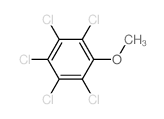The response of hydrophobic organics and potential toxicity in streams to urbanization of watersheds in six metropolitan areas of the United States.
Wade L Bryant, Steven L Goodbred
文献索引:Environ. Monit. Assess. 157(1-4) , 419-47, (2009)
全文:HTML全文
摘要
Semipermeable membrane devices (SPMDs) were deployed in streams along a gradient of urban land-use intensity in and around six metropolitan areas: Atlanta, Georgia; Raleigh-Durham, North Carolina; and Denver-Fort Collins, Colorado, in 2003; and Dallas-Fort Worth, Texas; Milwaukee-Green Bay, Wisconsin; and Portland, Oregon, in 2004 to examine relations between percent urban land cover in watersheds and the occurrence, concentrations, and potential toxicity of hydrophobic compounds. Of the 142 endpoints measured in SPMD dialysates, 30 were significantly (alpha = 0.05) related to the percent of urban land cover in the watersheds in at least one metropolitan area. These 30 endpoints included the aggregated measures of the total number of compounds detected and relative toxicity (Microtox(R) and P450RGS assays), in addition to the concentrations of 27 individual hydrophobic compounds. The number of compounds detected, P450RGS assay values, and the concentrations of pyrogenic polycyclic aromatic hydrocarbons (PAHs) were significantly related to percent urban land cover in all six metropolitan areas. Pentachloroanisole, the most frequently detected compound, was significantly related to urban land cover in all metropolitan areas except Dallas-Fort Worth. Petrogenic PAHs and dibenzofurans were positively related to percent urban land cover in Atlanta, Raleigh-Durham, Denver, and Milwaukee-Green Bay. Results for other endpoints were much more variable. The number of endpoints significantly related to urban land cover ranged from 6 in Portland to 21 Raleigh-Durham. Based on differences in the number and suite of endpoints related to urban intensity, these results provide evidence of differences in factors governing source strength, transport, and/or fate of hydrophobic compounds in the six metropolitan areas studied. The most consistent and significant results were that bioavailable, aryl hydrocarbon receptor agonists increase in streams as basins become urbanized. Potential toxicity mediated by this metabolic pathway is indicated as an important factor in the response of aquatic biota to urbanization.
相关化合物
| 结构式 | 名称/CAS号 | 分子式 | 全部文献 |
|---|---|---|---|
 |
五氯甲氧基苯
CAS:1825-21-4 |
C7H3Cl5O |
|
Responses of the L5178Y tk+/tk- mouse lymphoma cell forward ...
1987-01-01 [Environ. Mutagen. 9(2) , 143-60, (1987)] |
|
Involvement of cytochrome P450 in pentachlorophenol transfor...
2012-01-01 [PLoS ONE 7(9) , e45887, (2012)] |
|
Determination of halophenolic wood preservant traces in milk...
2008-12-26 [J. Chromatogr. A. 1215(1-2) , 1-7, (2008)] |
|
Tribromophenol and pentachlorophenol uptake from sawdust to ...
2009-10-01 [Food Addit. Contam. Part A. Chem. Anal. Control. Expo. Risk Assess. 26(10) , 1362-71, (2009)] |
|
Disposition and metabolism of radiolabelled pentachloroaniso...
1994-12-01 [Food Chem. Toxicol. 32(12) , 1137-46, (1994)] |